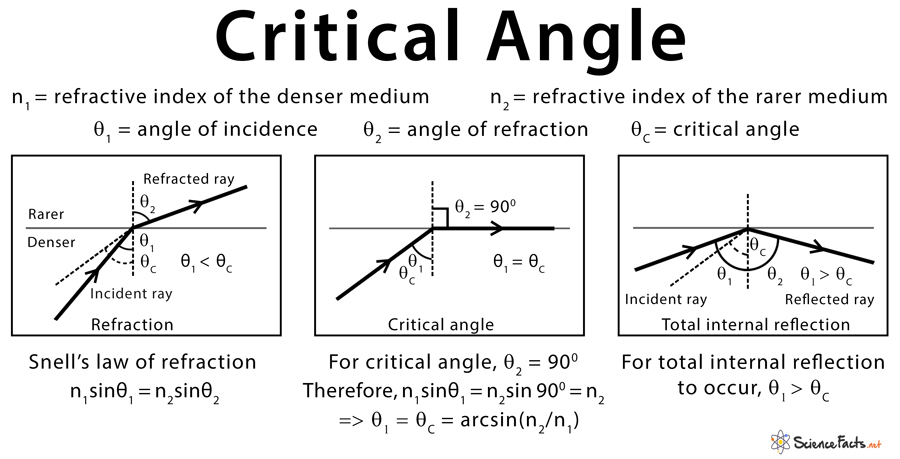Critical Angle
Definition: What is Critical Angle?
When a ray of light passes from a denser medium to a rarer medium, it bends away from the normal. As the angle of incidence increases, the refracted ray bends further and gets closer to the surface. If the angle of incidence angle is such that the angle of refraction makes 90° to the surface normal, then the incident angle is called the critical angle. Beyond this value, the ray of light is internally reflected from the interface into the denser medium. This phenomenon is known as total internal reflection and is closely related to the critical angle. Each pair of media has a specific critical angle value.
Conditions for Determination of Critical Angle
There are two necessary conditions for determining the critical angle.
- The ray of light must be traveling from a denser medium to a rarer medium, i.e., from a medium of higher refractive index to a medium of lower refractive index.
- The angle of refraction must be 90° so that Snell’s law of refraction can be used to determine the critical angle.
Formula for Critical Angle
Values of Critical Angle
Critical Angle for Different Pairs of Surfaces |
|
| Surface pair | Critical angle (θc) |
| Water and air | 48.6° |
| Ethanol and air | 47.3° |
| Glass (prism) and air | 41.1° |
| Plastic and air | 40.5° |
| Glass and water | 61° |
| Diamond and air | 24.4° |
| Fiber Optics | 76.6° |
Applications of Critical Angle
- To study adhesion and wetting of surfaces
- To prepare coatings for surfaces
Article was last reviewed on Tuesday, January 21, 2020









thanks for sharing such a wonderful note
am grateful for such. i want to know physics
great
great article!